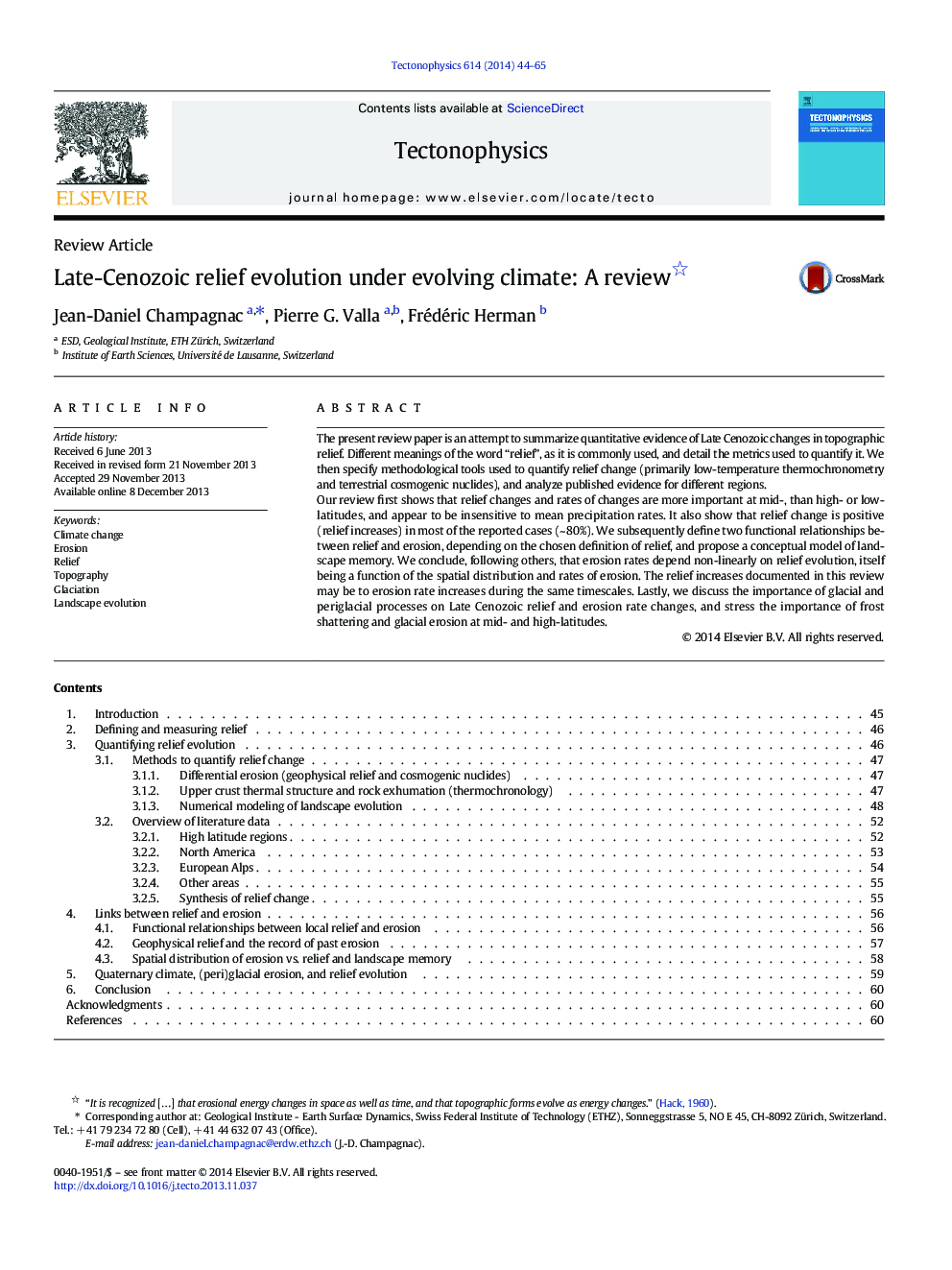| Article ID | Journal | Published Year | Pages | File Type |
|---|---|---|---|---|
| 4692091 | Tectonophysics | 2014 | 22 Pages |
•We compiled published quantitative evidences of Late Cenozoic relief change.•We show that increase of topographic relief is globally most common observation.•Relief increase is faster and more pronounced at mid- and high-latitude.
The present review paper is an attempt to summarize quantitative evidence of Late Cenozoic changes in topographic relief. Different meanings of the word “relief”, as it is commonly used, and detail the metrics used to quantify it. We then specify methodological tools used to quantify relief change (primarily low-temperature thermochronometry and terrestrial cosmogenic nuclides), and analyze published evidence for different regions.Our review first shows that relief changes and rates of changes are more important at mid-, than high- or low-latitudes, and appear to be insensitive to mean precipitation rates. It also show that relief change is positive (relief increases) in most of the reported cases (~ 80%). We subsequently define two functional relationships between relief and erosion, depending on the chosen definition of relief, and propose a conceptual model of landscape memory. We conclude, following others, that erosion rates depend non-linearly on relief evolution, itself being a function of the spatial distribution and rates of erosion. The relief increases documented in this review may be to erosion rate increases during the same timescales. Lastly, we discuss the importance of glacial and periglacial processes on Late Cenozoic relief and erosion rate changes, and stress the importance of frost shattering and glacial erosion at mid- and high-latitudes.
Graphical abstractFigure optionsDownload full-size imageDownload as PowerPoint slide
